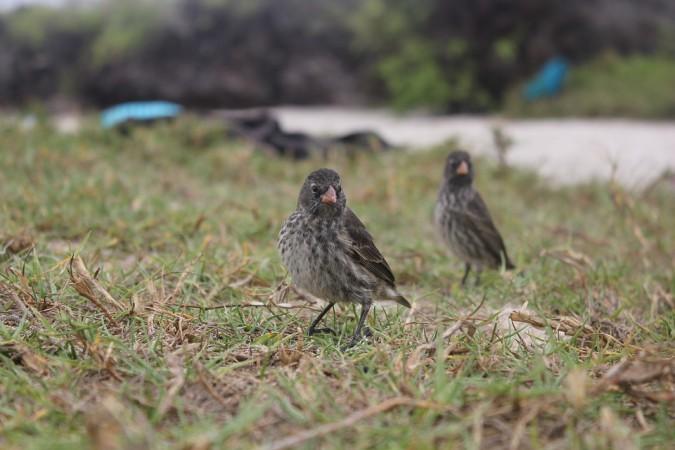
Scientists have for the first time observed evolution in a species of living beings. They have seen a new species of finches evolve within just two generations.
ALSO READ: Want to boost your sex drive? Include these foods in your diet
The researchers analysed the physical characteristics of these birds and confirmed the genomic their sequencing to conclude what many may find utterly surprising.
The evolution was observed in species of Darwin's finches that are endemic to a particular island called Daphne Major, located in the Galápagos. The newly-evolved species has been named Big Bird by the scientists.
ALSO READ: NASA releases Cassini's 'farewell image' of Saturn and its moons

"There are at least 15 species of Darwin's finches, so named because their diversity helped famed naturalist Charles Darwin figure out his theory of evolution by natural selection — that is, mutations can help species become better adapted to their environment, and be passed down to subsequent generations," reported news website Science Alert.
ALSO READ: You can lose weight faster and naturally with this spice
Two of these bird species copulated and gave birth to a completely new species, in a phenomenon called species hybridisation.
Peter Grant and B Rosemary Grant, who are biologists at Princeton University, were on an expedition to Daphne Major island where they detected the presence of a non-native species dubbed Geospiza conirostris.
ALSO READ: Conspiracy theorist claims Apollo moon landing was hoax, posts photo as proof [VIDEO]
This species is also known as large cactus finch, which is a native to the Galápagos islands of Española, Genovesa, Darwin, and Wolf.
A male bird belonging to this species was found to stand out when compared to the other Daphne Major species as its chirping differed from the rest of the birds.
ALSO READ: Abortion raises the risk of premature death in women by 50 percent
"We didn't see him fly in from over the sea, but we noticed him shortly after he arrived. He was so different from the other birds that we knew he did not hatch from an egg on Daphne Major," said Peter Grant.
This male bird produced its offspring after mating with two females belonging to Geospiza fortis, one of the native species which is also known as the medium ground finch.
ALSO READ: Do birds and animals fart?
The resulting offspring were what formed the newly-discovered species. It is completely isolated and birds of this species had to copulate with their own kind to survive.
The shape and size of the beak of birds of this species were different. These features help finches attract mates. Their song also differed from the medium ground finch.
ALSO READ: Eating star fruit could be harmful; here's why
This case of birds producing offspring after copulation between different species is similar to the cases of animals like donkey and a mare mating and producing a mule or a male lion and female tiger producing ligers.
Hybrid species are usually found to be sterile or face difficulty in reproducing, but it was not so in the case of this new species of birds.
ALSO READ: This is what former NASA engineer reveals about space UFO sightings
The island had faced droughts during 2002-2003 and the new lineage was in its fourth generation. The environmental factor leads to the death of two of the birds.
"When the rains came again, the brother and sister mated with each other and produced 26 offspring," Rosemary Grant said in an interview last year, as reported by Science Alert.
ALSO READ: 19-year-old American model sells her virginity for $2.9 million; here's why she did so
"All but nine survived to breed — a son bred with his mother, a daughter with her father, and the rest of the offspring with each other — producing a terrifically inbred lineage."
The most recent visit made to the island by Rosemary and Peter Grant was in 2012 when they counted 23 individuals along with eight breeding pairs of the birds.
ALSO READ: Can precum lead to pregnancy?
"A naturalist who came to Daphne Major without knowing that this lineage arose very recently would have recognised this lineage as one of the four species on the island," said Leif Andersson of Uppsala University in Sweden, who conducted the genetic analysis.
"This clearly demonstrates the value of long-running field studies."

















